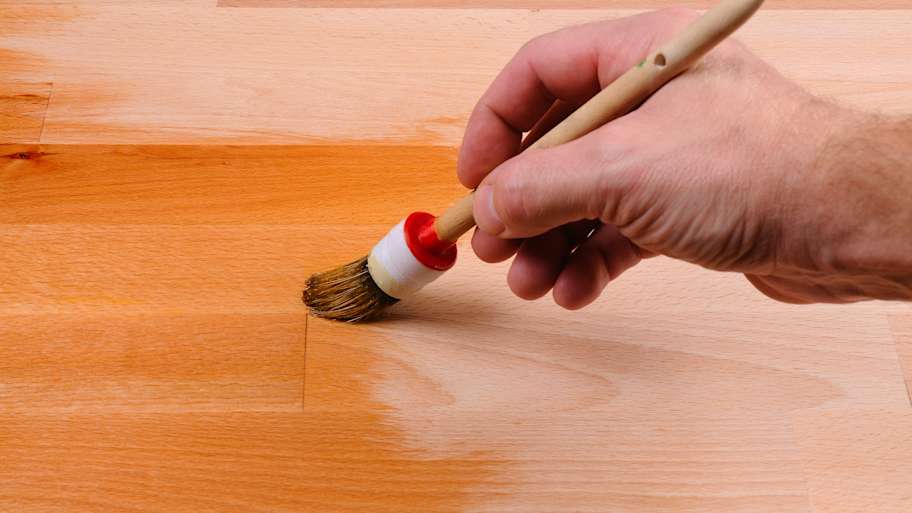
Updated flooring can make any room in your home feel brand new. Explore flooring installation costs in Baltimore, MD, from materials to labor costs.
Tung and linseed finishing oils—know the subtle differences


Tung and linseed oil are both wood finishing oils.
Raw linseed oil costs around $20 per quart.
Tung oil costs more at $30 per quart but delivers better durability.
Linseed oil cures slowly and adds a slight yellow tint.
Both oils work well for hardwood floors and furniture.
When you want to give your woodworking project a natural-looking finish that will catch the eye, wood finishing oils like tung and linseed are popular choices. Even though they may look similar in the bottle, they have important subtle differences. Understanding how tung versus linseed oil compare to each other will help you pick the right one for your particular project.
When comparing tung versus linseed oil, both products look similar at first glance—they’re clear with an oily texture. Neither pure wood finishing oil is toxic to humans, meaning you can use either of them on tables where you’d prepare or eat food. Both will need reapplication regularly.
Tung oil is highly durable and cures clear in a few days. Linseed oil is less expensive, but it takes several weeks to cure completely. If used on wood products that will receive rough treatment, linseed oil may show scratches on its satin finish. Tung oil delivers a matte finish.
| Type of Difference | Tung Oil | Linseed Oil |
|---|---|---|
| Color | Clear | Slight yellowish tin |
| Sheen | Matte | Satin |
| Full curing time | A few days | Several weeks |
| Cost | Higher than average | Lower than average |
| Durability | Resists damage | May show scratches |
| Water resistance | Above average | Minimal |
| Source | Nuts of tung trees | Ripe flax seeds |
| Use on flooring | Yes | Yes |
| Ease of use | Easier application | Challenging to apply |
Some of the most common uses for both tung and linseed oil on wood items include:
Hardwood floors
Furniture
Cutting boards
Paneling
Molding
Ceiling beams
Tool handles

Many people use tung or linseed oil when refinishing hardwood floors, furniture, or other types of wood. Learn about the differences between these two types of wood finishing oils to determine which one to use for your projects.
When applying tung oil or linseed oil to a piece of wood, linseed oil will add a slight yellow tint. However, you might not notice the tint on a darker piece of wood.
Pure tung oil, meanwhile, dries clear every time. Pigment powders are available to add some color to tung oil. If tung oil adds a tint to your wood without adding pigment, it’s probably a non-pure tung oil.
After tung oil dries, it leaves a matte sheen on the wood. Some people prefer this non- or low-reflective finish, as it allows the wood’s beauty to stand out on its own.
Linseed oil creates a satin finish on the wood, which gives it a slight gloss. Many people like the satin finish for wood floors because it hides minor imperfections and dust.
One tip for refinishing hardwood floors correctly is understanding the drying and curing time for the finishing oil. Tung oil should cure within a few days, while linseed oil can take several weeks to fully cure. Tung oil often includes resins that speed up the drying time.
If you’d like to speed up the curing time for linseed oil, try using boiled or polymerized linseed oils instead of raw linseed oil. If the application and curing steps for preparing hardwood floors for refinishing seem to be too much for you to tackle as a DIY project, hiring a local wood floor refinishing professional is a smart option. Professionals will use high-quality oils and give you guaranteed satisfaction with the results.
If you want to use pure tung oil, you can expect to pay up to $30 per quart. Raw linseed oil often costs less than $20 per quart.
If you want to save money compared to pure tung oil, you can select other options like blended tung oil, which will be less durable than pure tung oil. You can also save money on linseed oil by purchasing boiled linseed oil for about half the price of raw linseed oil. However, boiled linseed oil is not food-safe.

Most hardwood floors need refinishing after roughly 10 years. However, if you use linseed oil to refinish the floors instead of tung oil, you will need to refinish them more frequently.
Linseed oil delivers more durability than wood without an oil finish, but it creates far less durability than using pure tung oil. Linseed oil may suffer from water damage and scratches when used under normal conditions. You may need to reapply the linseed oil a few times a year to maintain the wood’s appearance. Tung oil is highly water- and scratch-resistant, but it will also need frequent reapplication if used on flooring in high-traffic areas.
After applying tung oil to the surface of the wood, you should notice water beading up. If the wood begins to look dry or water stops beading on the surface, you’ll need to reapply the tung oil.
Linseed oil is minimally water-resistant, so you should not use it on wood that receives regular water exposure.
Tung oil is easier to apply to wood than linseed oil, although it also has some challenges. Pure tung oil is thick, which slows the application process. Other variations of tung oil are thinner and decrease drying time, simplifying the application.
Linseed oil has a thin consistency, which makes it easy to work with. However, you will need to use multiple coats, which causes the application to take significantly longer.
Both tung and linseed oil have a history of use dating back several centuries. Manufacturers press the nuts of the tung tree to produce tung oil, while linseed oil comes from ripe flax seeds.
From average costs to expert advice, get all the answers you need to get your job done.

Updated flooring can make any room in your home feel brand new. Explore flooring installation costs in Baltimore, MD, from materials to labor costs.

Removing tile flooring is a labor-intensive process. Here’s how much it costs to remove tile flooring, whether you hire the project out or do it yourself.

Mobile home floor repair costs are similar to flooring repair costs in other types of homes. It all depends on the damage, size, and materials.

Updated flooring can make any room in your home feel brand new. Explore flooring installation costs in Minneapolis, MN, from materials to labor costs.

Updated flooring can make any room in your home feel brand new. Explore flooring installation costs in Washington, D.C., from materials to labor costs.

Curious about how to remove asbestos tile? While typically best left to the pros, if you have some skill in this area, here is how to remove it safely.